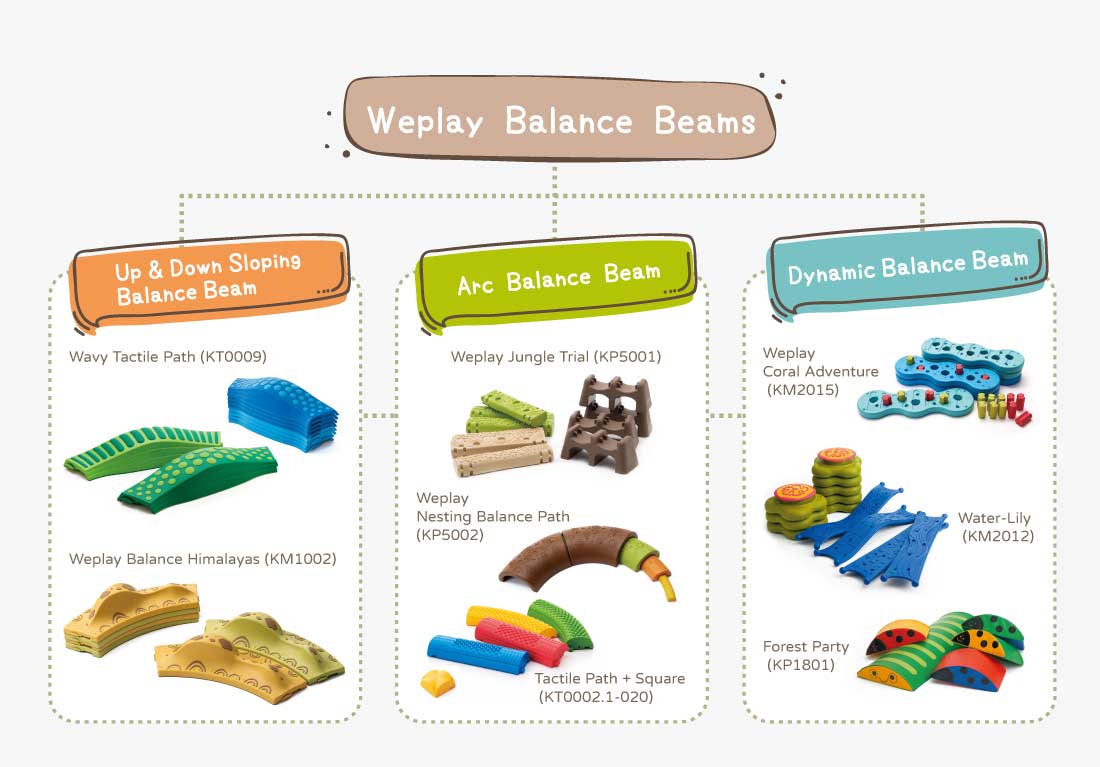Balance Stepping Stones are one of the essential tools to help children develop gross motor skills. Teachers can freely change the directions of the Stones and the distance between them to create different challenges. Moving from one Stone to another, children learn to maintain their center of gravity and keep balance in different ways.
There are many kinds of Stepping Stones with different features. How to choose the most suitable one for us? Scroll down to see the differences between the Balance Stepping Stones in the Weplay worl
★ Up & Down Sloping Balance Beam
Different from the flat balance beams, the up & down design incorporate nature mountain/forest elements. Children can experience balance control while walking uphill, and enhance lower body mobility as well as foot strength while walking downhill. The configuration is non-directional, so it can be arranged into a curvy, circular or linear route to provide children with multiple ways of playing. They are stackable for easy storage and suitable for small spaces!
★ Arc Balance Beam
With the convex surface design of the balance beams, children need to walk on the peak of the balance beam to keep balance. Since the range for walking is narrower than visually, children would learn how to adjust their center of gravity and improve their spatial awareness. Besides, there are tactile patterns on the surface to offer sensory inputs and stimulation to the feet.
★ Dynamic Balance Beam
Adding a little dynamic surprise to the balance beams by increasing walking speed and exertion of each step bring different balance challenges to promote action planning and problem-solving skills. Each set in this series has different features. Find out more below:




